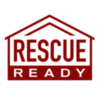The Hidden Dangers of Power Strips: What You Need to Know for Safety
Power strips are convenient, often essential tools in modern homes and offices. They allow multiple devices to be plugged into a single outlet, offering a simple solution for powering gadgets in rooms with limited electrical sockets. However, while power strips offer undeniable convenience, they also pose significant safety risks if not properly used.
The Hidden Fire Hazard: Startling Statistics
Power strips and their cousins, surge protectors, are common sources of household fires. According to the U.S. Fire Administration (USFA), electrical malfunctions, including those from power strips, are responsible for nearly 51,000 home fires yearly. These fires resulted in approximately 500 deaths, over 1,400 injuries, and almost $1.3 billion in property damage.
A study by the National Fire Protection Association (NFPA) found that electrical distribution and lighting equipment, which includes power strips, accounted for 10% of all home fires. Many of these incidents stem from improper use, including overloading the strip, using it with high-wattage appliances, or connecting multiple strips (daisy-chaining).
Pros and Cons of Using Power Strips
Pros:
- Convenience: Power strips, with their ability to power multiple devices from a single outlet, are a boon for modern living. They are ideal for offices, entertainment centers, and home workshops, offering a practical solution to cord clutter and limited outlets.
- Space-saving: Power strips are not just about convenience. They also help manage cord clutter, especially in areas with limited outlets. They efficiently utilize space, making them a must-have in any modern home or office.
- Mobility: Most power strips are lightweight and portable, offering flexibility in their use. They can be easily moved around as needed, adapting to the changing power needs of your devices.
- Some offer surge protection: Higher-end models can protect electronics from power surges, which can save devices during electrical storms or power grid fluctuations.
Cons:
- Overloading Risk: Power strips can be easily overloaded, which increases the risk of electrical fires. This is particularly dangerous if high-wattage appliances like space heaters, microwaves, or refrigerators are plugged in.
- False Sense of Security: Many people mistakenly believe that all power strips offer surge protection, but this is not always true. Basic power strips do not protect against power surges.
- Wear and Tear: Power strips can degrade over time, especially if they are used frequently or exposed to environmental factors like heat or moisture.
- Potential for Improper Use: It’s common to see power strips being misused, such as daisy-chaining multiple strips together or using them inappropriately in damp environments, which can lead to fires or electrocution.
What to Look for in a Safe Power Strip
When selecting a power strip, consider the following features to ensure safety:
- UL Certification: Always choose a power strip tested and certified by Underwriters Laboratories (UL). This certification ensures the product meets specific safety standards.
- Surge Protection: If you need a power strip for electronics like computers or televisions, choose one with built-in surge protection. Look for a Joules rating (higher is better) and an indicator light that shows when the protection is active.
- Circuit Breaker: A good power strip should have a built-in circuit breaker that cuts power if overloaded, preventing potential fires.
- Amperage Rating: Make sure the power strip can handle the total load of the devices you plan to connect. Typically, power strips are rated for 15 or 20 amps.
- Length and Gauge of Cord: The power strip’s cord should be thick enough to handle the electrical load. A shorter, thicker cord is generally safer than a long, thin one. Avoid using extension cords with power strips.
- Number of Outlets: Choose a power strip with enough outlets for your needs, but avoid overloading it by plugging in too many high-wattage devices.
Safety Tips for Using Power Strips
- Avoid Overloading: Never exceed the power strip’s wattage capacity. High-wattage appliances should be plugged directly into a wall outlet, not a power strip.
- No Daisy-Chaining: Never plug one power strip into another. This practice can quickly lead to overheating and fires.
- Regular Inspection: Check your power strips regularly for signs of wear, such as frayed cords, scorch marks, or loose connections. If any damage is found, replace them.
- Keep Away from Water: Power strips should never be used in damp areas like bathrooms or kitchens unless specifically designed for such environments.
- Use Surge Protectors for Electronics: Always use a power strip with surge protection to guard against voltage spikes for expensive electronics.
- Turn Off When Not in Use: If you’re not using the devices plugged into the strip, turn off the strip to reduce the risk of overheating.
- Educate Others: Ensure that everyone in your household or workplace understands how to use power strips properly to prevent accidental misuse.
Conclusion
Power strips are useful but must be used carefully to avoid serious safety risks. By understanding the potential dangers, choosing the right power strip, and following safety guidelines, you can protect your home and loved ones from preventable accidents. Always prioritize safety and regularly inspect and replace power strips to secure your environment.
References:
- U.S. Fire Administration. (2022). Residential Building Electrical Fires (2017-2019). Retrieved from https://www.usfa.fema.gov
- National Fire Protection Association. (2020). Home Electrical Fires. Retrieved from https://www.nfpa.org
- Consumer Product Safety Commission. (2021). Extension Cord and Power Strip Safety Tips. Retrieved from https://www.cpsc.gov
